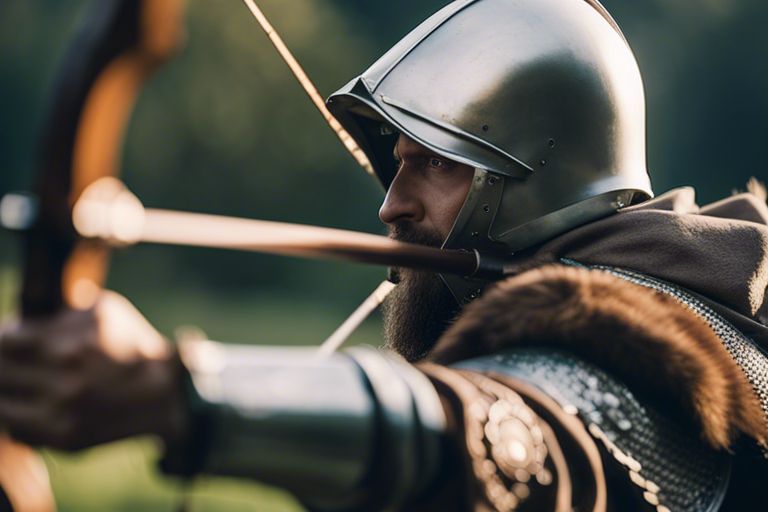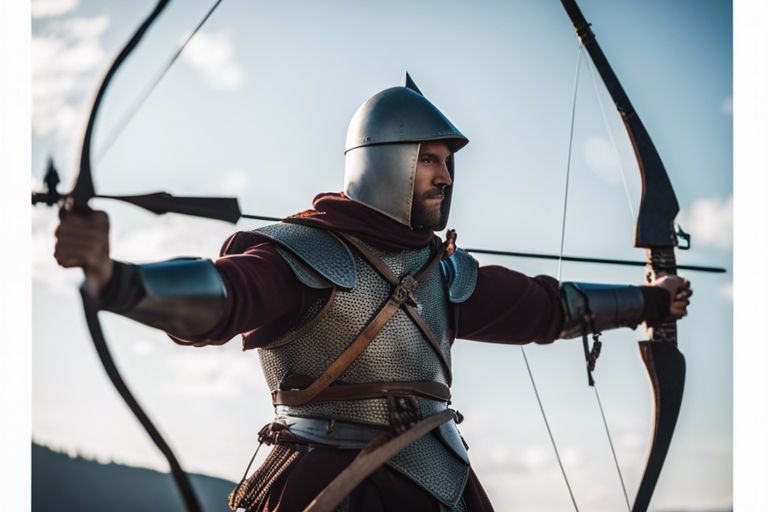It’s a question that has intrigued warriors and historians for centuries – can a bodkin arrow penetrate through plate armor? The power of a crossbow and the design of a bodkin arrow have been praised for their ability to pierce through even the toughest of defenses. In this blog post, we will research into the dangerous capabilities of a crossbow equipped with a bodkin arrow, exploring how it could potentially breach the protective layers of plate armor. Join us as we uncover the history and mechanics behind this formidable weapon, shedding light on its deadly effectiveness in battle.
Contents
- The Evolution of Crossbows
- Early Crossbows and Their Capabilities
- Technological Advancements and Increased Power
- Anatomy of a Bodkin Arrow
- Design Characteristics
- Material and Craftsmanship
- Plate Armor Through the Ages
- Development of Plate Armor
- Plate Armor’s Resistance to Projectiles
- Testing the Piercing Power
- Experimental Approaches
- Recorded Historical Instances
- The Physics Behind The Force
- Mechanics of Crossbow Shooting
- The Interaction Between Arrow and Armor
- Conclusion
The Evolution of Crossbows
Early Crossbows and Their Capabilities
On the battlefield, early crossbows were crucial weapons due to their simple yet effective design. These crossbows consisted of a prod (bow), a stock (the body of the weapon), and a trigger mechanism. They were powerful enough to penetrate light armor and were easier to train troops on than traditional bows, making them popular among militaries during the Middle Ages.
Technological Advancements and Increased Power
To meet the demands of warfare, crossbow technology evolved rapidly. The introduction of spanning mechanisms like the windlass and cranequin allowed for greater draw weights, resulting in increased power and range. The development of steel prods and later composite materials further enhanced the penetration capabilities of crossbows, making them a formidable weapon against heavily armored opponents.
Another significant advancement was the adoption of stirrups, which enabled soldiers to handle crossbows with greater stability and accuracy. These enhancements, combined with the implementation of specialized bolt heads like bodkin points, ensured that crossbows became more lethal and versatile than ever before.

Anatomy of a Bodkin Arrow
Design Characteristics
While bodkin arrows may vary slightly in design, they typically feature a long, slender shape with a sharply pointed steel tip. This streamlined design allows for higher penetration power and increased accuracy when fired from a crossbow. Any imperfections in the aerodynamic profile can significantly impact the arrow’s flight trajectory and overall effectiveness.
Material and Craftsmanship
Craftsmanship plays a crucial role in the creation of bodkin arrows. Skilled artisans meticulously construct these projectiles using high-quality materials such as steel or iron. The arrowheads are carefully forged to ensure sharpness and durability necessary to pierce through tough armor. The shafts are often made from sturdy wood or lightweight metals, providing the necessary balance between weight and strength to deliver maximum impact upon impact.
To truly appreciate the effectiveness of a bodkin arrow, one must understand the intricate relationship between its design characteristics and the materials used in its construction. The combination of precision engineering and quality craftsmanship results in a formidable weapon capable of penetrating even the toughest defenses on the battlefield.
Plate Armor Through the Ages
Development of Plate Armor
Through the centuries, plate armor evolved from simple pieces of metal added to chainmail to full suits covering a warrior from head to toe. Initially designed for protection against swords and axes, the development of plate armor was a response to the increasing sophistication of weapons on the battlefield.
Plate Armor’s Resistance to Projectiles
For centuries, plate armor was the pinnacle of protection against projectile weapons like arrows and bolts. The complexity and thickness of the metal made it incredibly difficult for these projectiles to penetrate the armor. Even bodkin arrows, designed for armor penetration, often struggled to make a dent in the sturdy plates.
Another point to consider is that plate armor’s ability to resist projectiles varied depending on the angle and force of the attack. While a direct hit from a powerful crossbow could still pierce the armor, most projectiles were deflected or absorbed by the ingenious design of the plates, saving the wearer from severe injury.
Testing the Piercing Power
Experimental Approaches
Many experiments have been conducted to determine whether a bodkin arrow can pierce plate armor when shot from a crossbow. Researchers typically set up controlled scenarios where a skilled archer fires bodkin arrows at various types of plate armor to gauge the arrow’s effectiveness in penetrating the metal.
Recorded Historical Instances
Testing the piercing power of a bodkin arrow against plate armor has a long history, with recorded instances dating back to medieval times. Historical accounts tell of skilled archers successfully penetrating plate armor with bodkin arrows, highlighting the deadly force that these weapons could deliver on the battlefield.
Another important detail to note is that the success of a bodkin arrow in piercing plate armor relied heavily on the arrow’s design and the strength of the crossbow used. Skilled archers who could accurately aim for gaps in the armor could deliver devastating blows to their opponents, showcasing the deadly potential of these weapons.

The Physics Behind The Force
Now, when discussing the power of a crossbow and its ability to penetrate plate armor, it is crucial to investigate into the physics behind the force. As debated in a discussion on English Longbows w/ No Penetration?, understanding the mechanics and interactions involved is crucial in determining the outcome of such an encounter.
Mechanics of Crossbow Shooting
One of the key elements in understanding the force behind a crossbow’s penetration capabilities lies in the mechanics of crossbow shooting. The energy stored in the drawn bowstring is transferred to the arrow upon release, propelling it forward with significant force. The draw weight of the crossbow, the design of the arrow, and the distance between the crossbow and the target all play a role in determining the impact it can inflict.
The Interaction Between Arrow and Armor
On the other hand, the interaction between the arrow and the armor also plays a critical role in whether a bodkin arrow can pierce plate armor. For instance, the shape and composition of the arrowhead, as well as the quality and thickness of the armor, can greatly influence the outcome of the impact. A properly designed arrow with a sharp, narrow bodkin head aimed at a vulnerable spot on the armor stands a better chance of penetrating the plate. Additionally, the velocity and angle at which the arrow hits the armor can also determine its effectiveness.
Conclusion
The bodkin arrow’s ability to penetrate plate armor when fired from a crossbow has been a topic of debate for centuries. Through our exploration of the power of a crossbow, we have discovered that a bodkin arrow, with its sharp and narrow tip, has the potential to pierce through the gaps in armor or cause damage to weaker areas. However, the effectiveness of such an attack would ultimately depend on several factors such as the distance, angle, and the type of armor being used. While a bodkin arrow may have enough force to penetrate plate armor under certain conditions, it is not always guaranteed. Overall, the power of a crossbow and bodkin arrow combination remains a formidable force in combat, showcasing the deadly precision and strength of medieval weaponry.

Leave a Reply